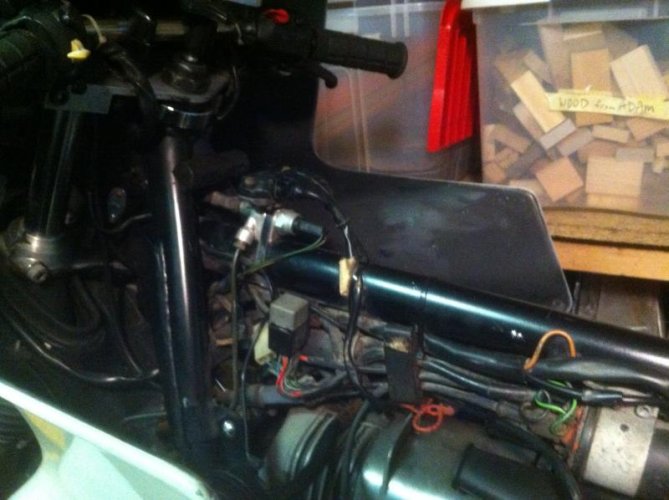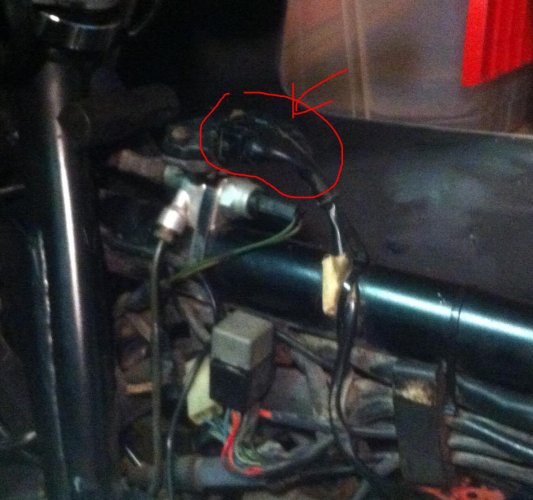plehman
New member
Hi guys,
New to me '81 R100RS - it got through the tough Mass inspection, but barely. The front brake switch was sticking on periodically. Now it's stuck on all the time. I'm guessing it's the switch, but there's a bit of equipment that isn't like my R90/6 - hoping someone can explain before I go messing it up.
It has twin front rotors, so two hoses from the right grip into the junction under the tank. Then a switch (two leads grn/bk and grn/red) and two metal hoses out to the brake calipers. If you pull the leads the light goes out (of course). If I put the multi meter on the leads, I expect to see a switch on/off from the brake. But it just shows a solid signal. Not sure why.
And I think the piece above is the cable (?) that activates the hydraulic system. I need to take that off to get the switch. I hope brake fluid doesn't come squirting out.
Rear brake works as normal.
Any suggestions welcome.
thanks
New to me '81 R100RS - it got through the tough Mass inspection, but barely. The front brake switch was sticking on periodically. Now it's stuck on all the time. I'm guessing it's the switch, but there's a bit of equipment that isn't like my R90/6 - hoping someone can explain before I go messing it up.
It has twin front rotors, so two hoses from the right grip into the junction under the tank. Then a switch (two leads grn/bk and grn/red) and two metal hoses out to the brake calipers. If you pull the leads the light goes out (of course). If I put the multi meter on the leads, I expect to see a switch on/off from the brake. But it just shows a solid signal. Not sure why.
And I think the piece above is the cable (?) that activates the hydraulic system. I need to take that off to get the switch. I hope brake fluid doesn't come squirting out.
Rear brake works as normal.
Any suggestions welcome.
thanks


